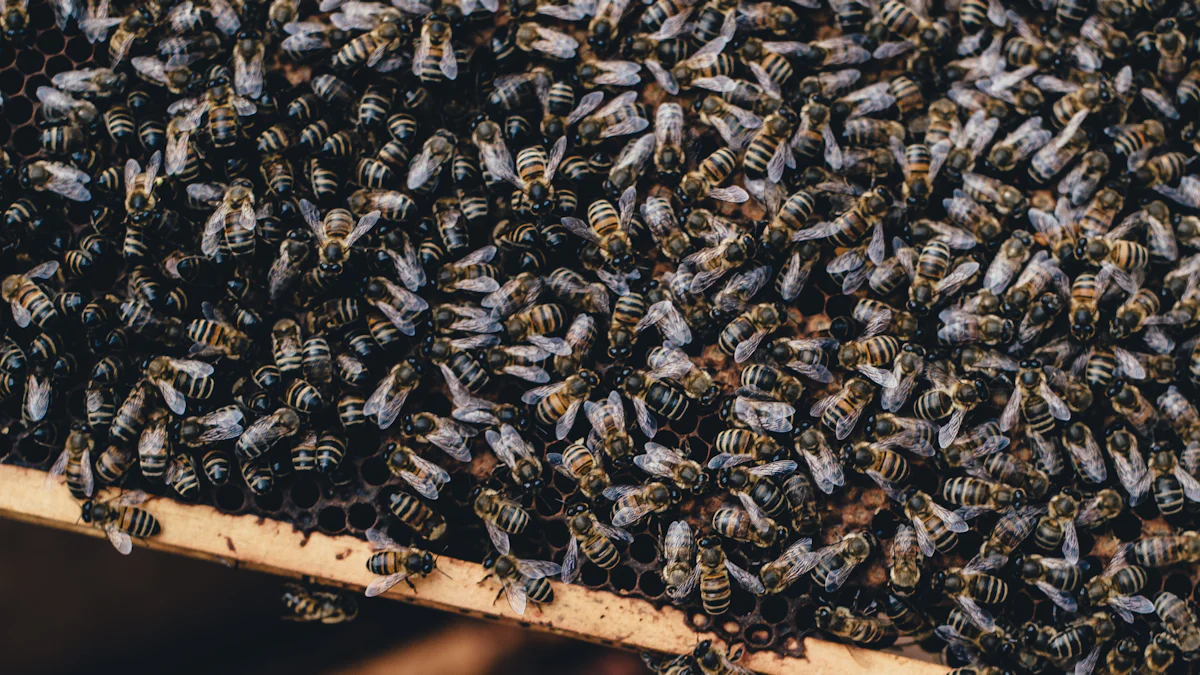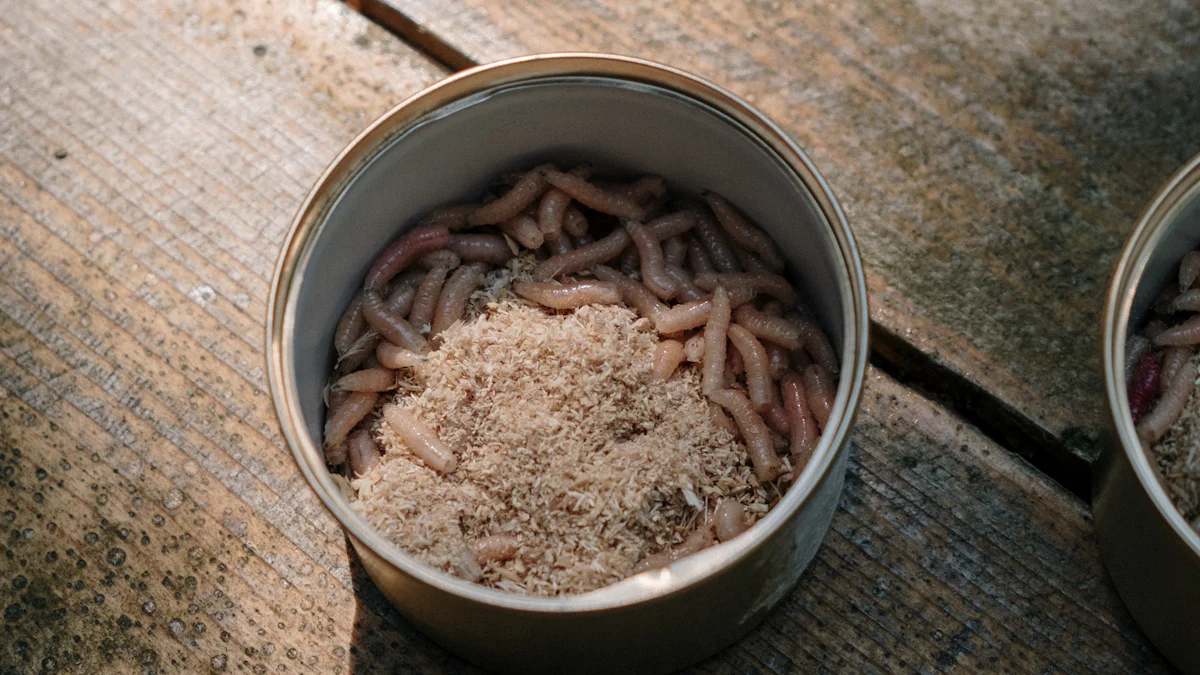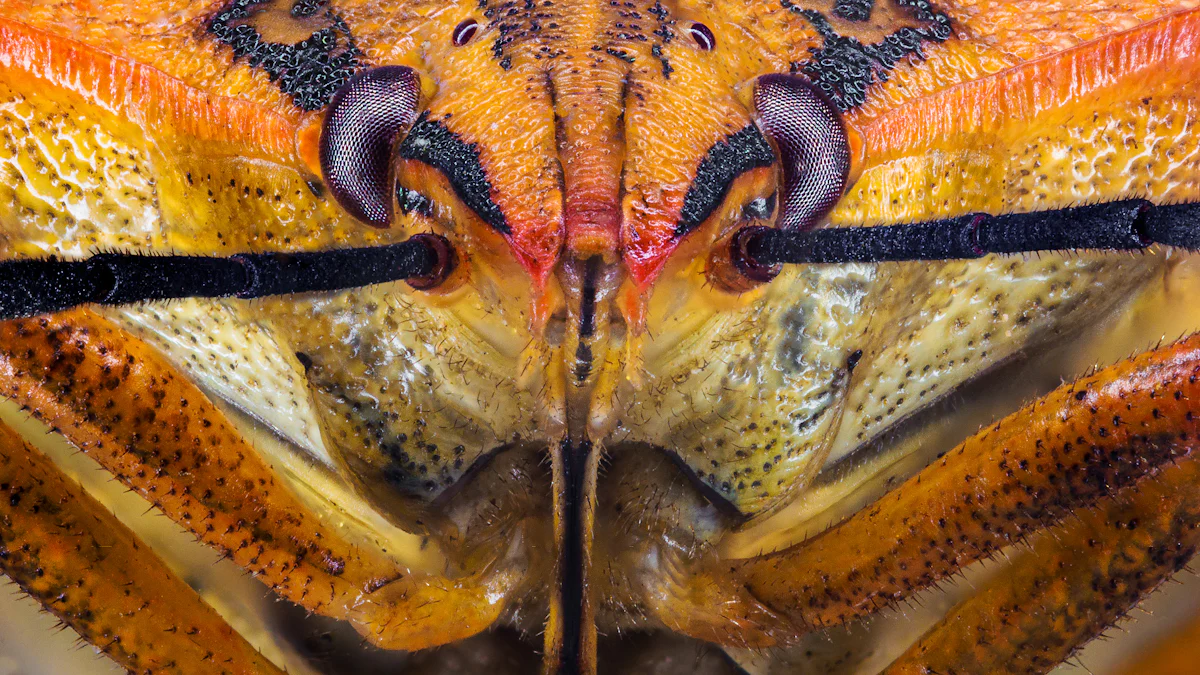
High Protein Mealworm offers a sustainable and nutrient-packed solution for you and your pets. It’s an excellent source of high-quality protein that fits seamlessly into daily meals. You can blend it into smoothies, bake it into muffins, or enjoy it as a crunchy snack. For your pets, mealworm-based food or homemade treats provide a tasty and nutritious boost. This versatile ingredient supports health while being eco-friendly. Whether you’re experimenting with recipes or enhancing your pet’s diet, High Protein Mealworm makes a smart, forward-thinking choice.
Key Takeaways
- High Protein Mealworm is a nutrient-dense food source, offering up to 53% protein by weight, making it an excellent option for boosting your protein intake.
- Incorporating mealworms into your diet can be easy—try adding them to smoothies, salads, or baked goods for a healthy twist.
- Mealworms are not just for humans; they provide high-quality protein and essential nutrients for pets, supporting their overall health and energy levels.
- Start with small amounts when introducing mealworms to your diet or your pet’s diet, and monitor for any allergic reactions or sensitivities.
- Choose high-quality mealworms from reputable suppliers to ensure safety and nutritional value, avoiding those intended for non-food purposes.
- Mealworm protein is an eco-friendly choice, requiring less land and resources compared to traditional protein sources, contributing to a more sustainable food system.
- Experiment with different recipes and mealworm forms (powder, flour, or whole) to find what works best for your taste and dietary needs.
Benefits of High Protein Mealworm

Nutritional Value for Humans
Mealworms pack a punch when it comes to nutrition. They’re loaded with protein, offering up to 53% protein by weight. This makes them an excellent choice for anyone looking to boost their protein intake. Along with protein, mealworms provide essential vitamins like B12, which supports energy production and brain health. They also contain healthy fats, including omega-3 and omega-6 fatty acids, which promote heart health and reduce inflammation.
Adding mealworms to your diet can help you meet your daily protein needs without relying on traditional sources like meat or dairy. They’re also rich in minerals such as iron, zinc, and magnesium, which play vital roles in maintaining strong bones, supporting your immune system, and improving muscle function. Whether you’re an athlete, a busy professional, or someone exploring sustainable food options, mealworms offer a nutrient-dense solution.
Nutritional Value for Pets
Your pets can benefit from mealworms just as much as you can. Mealworms provide high-quality protein that supports muscle growth and maintenance in pets. They’re also a great source of amino acids, which are essential for your pet’s overall health. For dogs, cats, birds, and even reptiles, mealworms can serve as a nutritious addition to their diet.
Mealworms are easy to digest, making them suitable for pets with sensitive stomachs. They’re also packed with healthy fats that contribute to a shiny coat and healthy skin. If your pet consumes insects naturally, mealworms can be gut-loaded with additional nutrients before feeding, enhancing their nutritional value even further. Including mealworms in your pet’s diet can improve their energy levels, support their immune system, and keep them happy and healthy.
“Mealworms are not just a treat; they’re a complete package of nutrition for both humans and pets.”
How to Incorporate High Protein Mealworm into Your Diet
Meal Ideas
Adding High Protein Mealworm to your meals can be simple and delicious. You can sprinkle dried mealworms over salads for a crunchy topping or mix them into your favorite trail mix. For breakfast, try blending mealworm powder into smoothies or oatmeal for an extra protein boost. If you enjoy baking, incorporate mealworm flour into muffins, pancakes, or even cookies. It works well in savory dishes too. Add it to soups, stews, or stir-fries for a nutrient-packed twist. These ideas make it easy to enjoy the benefits of High Protein Mealworm without drastically changing your diet.
Cooking Tips
Cooking with High Protein Mealworm doesn’t require advanced skills. Start by using mealworm powder or flour in small amounts to get used to the flavor. When baking, replace a portion of regular flour with mealworm flour to maintain the texture of your dish. If you’re using whole dried mealworms, toast them lightly for a nutty flavor. They pair well with spices like paprika, garlic powder, or chili flakes. For smoothies, blend mealworm powder with fruits, yogurt, and a liquid base for a creamy, protein-rich drink. Experiment with different recipes to find what works best for your taste.
Dosage Recommendations
When adding High Protein Mealworm to your diet, moderation is key. For adults, start with one to two tablespoons of mealworm powder per day. This amount provides a significant protein boost without overwhelming your system. If you’re using whole dried mealworms, a handful (about 10-15 grams) is a good starting point. Gradually increase the quantity as your body adjusts. Always ensure you’re balancing mealworm protein with other food groups to maintain a well-rounded diet. Consult a nutritionist if you have specific dietary needs or concerns.
How to Incorporate High Protein Mealworm into Your Pet’s Diet

Types of Pet Food with Mealworm Protein
You can find pet food with mealworm protein in many forms. Some brands offer dry kibble enriched with mealworm protein, while others create wet food options. These products provide a balanced diet for your pets and include mealworms as a primary protein source. Look for labels that highlight mealworm protein to ensure you’re choosing the right product. Many of these foods also include added vitamins and minerals to support your pet’s overall health.
Mealworm-based treats are another great option. These treats often come in bite-sized pieces, making them perfect for training or rewarding your pet. They combine the nutritional benefits of mealworms with flavors your pet will love. If your pet has specific dietary needs, consult your veterinarian before switching to mealworm-based food.
Homemade Mealworm Treats
Making homemade mealworm treats is easier than you might think. You can use dried mealworms or mealworm powder as the main ingredient. Start by mixing mealworms with other pet-safe ingredients like oats, peanut butter (unsalted and unsweetened), or mashed sweet potatoes. Shape the mixture into small balls or cookies and bake them at a low temperature until firm.
For dogs, you can create a simple mealworm biscuit by combining mealworm powder, whole wheat flour, and water. Roll out the dough, cut it into shapes, and bake. For cats, mix mealworms with canned tuna and a small amount of flour to form bite-sized treats. Always ensure the ingredients you use are safe for your specific pet. Homemade treats let you control what goes into your pet’s diet, ensuring they get a healthy and tasty snack.
Dosage and Safety Tips
When introducing High Protein Mealworm into your pet’s diet, start small. For dogs, begin with a teaspoon of mealworm powder or a few dried mealworms mixed into their food. Cats may need even less, around half a teaspoon. Birds and reptiles can enjoy mealworms as occasional treats, but keep the portions appropriate for their size.
Monitor your pet for any signs of allergies or sensitivities, such as itching or digestive upset. If you notice any issues, stop feeding mealworms and consult your veterinarian. Always ensure mealworms are sourced from reputable suppliers to avoid contamination. Gut-loading mealworms before feeding them to pets like reptiles can enhance their nutritional value. Moderation is key to maintaining a balanced diet for your pet.
"A little goes a long way when adding mealworms to your pet’s meals. Start slow and watch them thrive."
Precautions and Considerations
Allergies and Sensitivities
Before diving into mealworm protein, you should consider potential allergies. Some people and pets may have sensitivities to insects, especially if they’re allergic to shellfish. Mealworms contain chitin, a substance also found in shellfish, which can trigger allergic reactions. Watch for symptoms like itching, swelling, or digestive upset after consuming mealworms.
For your pets, introduce mealworms gradually. Start with a small amount and observe their reaction. If your pet shows signs of discomfort, such as vomiting, diarrhea, or excessive scratching, stop feeding them mealworms immediately. Always consult your veterinarian if you’re unsure about your pet’s dietary needs or if they have a history of food allergies.
“When trying something new, it’s always better to start small and monitor closely.”
Sourcing High-Quality Mealworm Protein
Not all mealworms are created equal. To ensure safety and quality, you should source mealworms from reputable suppliers. Look for products labeled as food-grade or pet-safe. These labels indicate that the mealworms meet strict safety standards for consumption.
Avoid mealworms intended for fishing bait or other non-food purposes. These may contain harmful chemicals or contaminants. Check the packaging for information about the farming process. Mealworms raised in controlled environments with clean feed are the best choice. If you’re buying dried mealworms, ensure they’re free from additives or preservatives.
Online reviews and recommendations can help you find trusted brands. You can also ask your veterinarian or local pet store for advice on sourcing high-quality mealworm protein for your pets.
Environmental Benefits
Choosing mealworm protein isn’t just good for you and your pets—it’s great for the planet too. Mealworms have a much smaller environmental footprint compared to traditional protein sources like beef or chicken. They require less land, water, and feed to produce, making them a sustainable option.
Mealworm farming generates fewer greenhouse gas emissions, which helps combat climate change. By incorporating mealworms into your diet or your pet’s meals, you’re supporting a more eco-friendly food system. This small change can make a big difference in reducing your environmental impact.
“Every bite of mealworm protein is a step toward a healthier planet.”
Embracing mealworm protein benefits your health, your pet’s well-being, and the environment. With a little care in sourcing and preparation, you can enjoy this sustainable superfood with confidence.
Mealworm protein offers a versatile and sustainable way to boost nutrition for you and your pets. It’s packed with benefits, from high-quality protein to essential nutrients, making it a smart addition to any diet. Start small—try sprinkling it on meals or mixing it into pet food. Experiment with recipes to find what works best for you.
By choosing mealworm protein, you’re not just improving health—you’re also supporting the planet. Its low environmental impact makes it a forward-thinking choice. Take the first step today and explore the possibilities of this eco-friendly superfood!
FAQ
What are mealworms, and why are they a good source of protein?
Mealworms are the larvae of darkling beetles. They’re packed with protein, containing up to 53% protein by weight. This makes them an excellent choice for boosting your protein intake. They also provide essential nutrients like vitamins, healthy fats, and minerals, making them a nutrient-dense option for both you and your pets.
Can I eat mealworms raw?
It’s not recommended to eat mealworms raw. Cooking or roasting them ensures they’re safe to consume by eliminating any potential bacteria or parasites. You can also use mealworm powder, which is processed and ready to eat, in recipes like smoothies or baked goods.
Are mealworms safe for all pets?
Mealworms are safe for most pets, including dogs, cats, birds, and reptiles. However, you should introduce them gradually and monitor your pet for any signs of allergies or sensitivities. Always consult your veterinarian before adding mealworms to your pet’s diet, especially if they have specific dietary needs.
How do I store mealworms?
Store dried mealworms in an airtight container in a cool, dry place. This keeps them fresh and prevents moisture from spoiling them. If you’re using live mealworms, keep them in a ventilated container with a food source like oats or bran. Refrigeration slows their growth and extends their shelf life.
Can mealworms replace traditional protein sources?
Mealworms can supplement your protein intake but shouldn’t completely replace traditional protein sources. They’re a great addition to a balanced diet, offering unique nutrients like chitin and omega fatty acids. For pets, mealworms can complement their regular food but should not be their sole protein source.
How do I know if I’m allergic to mealworms?
If you’re allergic to shellfish, you might also react to mealworms because they contain chitin, a substance found in shellfish. Symptoms of an allergy include itching, swelling, or digestive upset. Start with a small amount and monitor your body’s reaction. Consult a doctor if you experience any adverse effects.
Where can I buy high-quality mealworms?
You can find high-quality mealworms online, at specialty food stores, or in pet supply shops. Look for products labeled as food-grade or pet-safe. Avoid mealworms intended for fishing bait, as they may contain harmful chemicals. Check reviews and recommendations to ensure you’re buying from a trusted supplier.
How do I prepare mealworms for cooking?
If you’re using dried mealworms, you can toast them lightly for a nutty flavor. For whole mealworms, rinse them thoroughly and cook them by roasting, frying, or boiling. Mealworm powder is ready to use and can be added directly to recipes like smoothies, soups, or baked goods.
Are mealworms environmentally friendly?
Yes, mealworms are an eco-friendly protein source. They require less land, water, and feed compared to traditional livestock. Mealworm farming also produces fewer greenhouse gas emissions. By choosing mealworms, you’re making a sustainable choice that benefits the planet.
How much mealworm protein should I give my pet?
Start with small amounts. For dogs, mix a teaspoon of mealworm powder or a few dried mealworms into their food. Cats may need half a teaspoon. Birds and reptiles can enjoy mealworms as occasional treats. Adjust the portion based on your pet’s size and dietary needs, and always consult your veterinarian for guidance.


